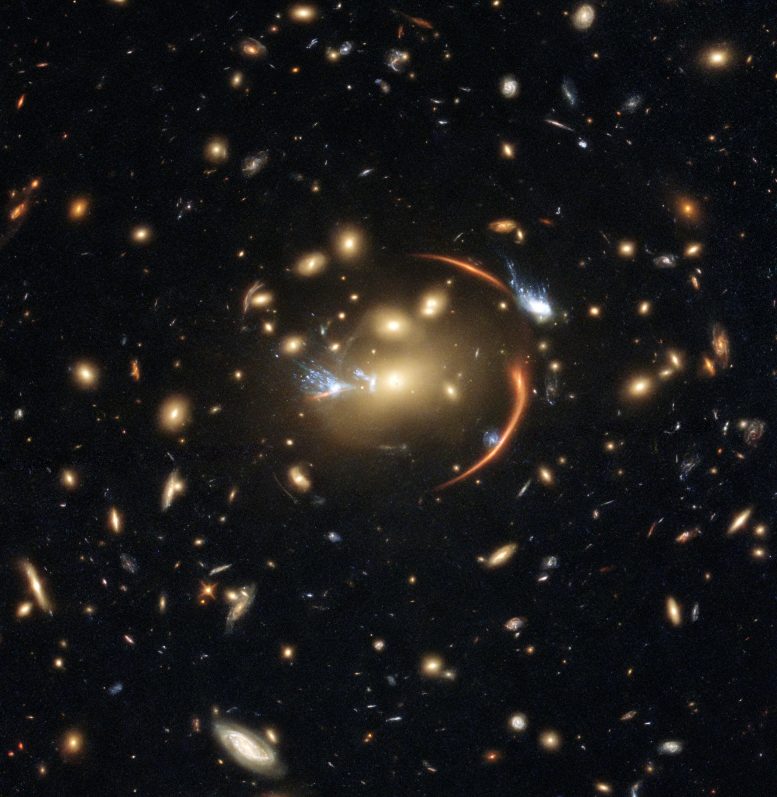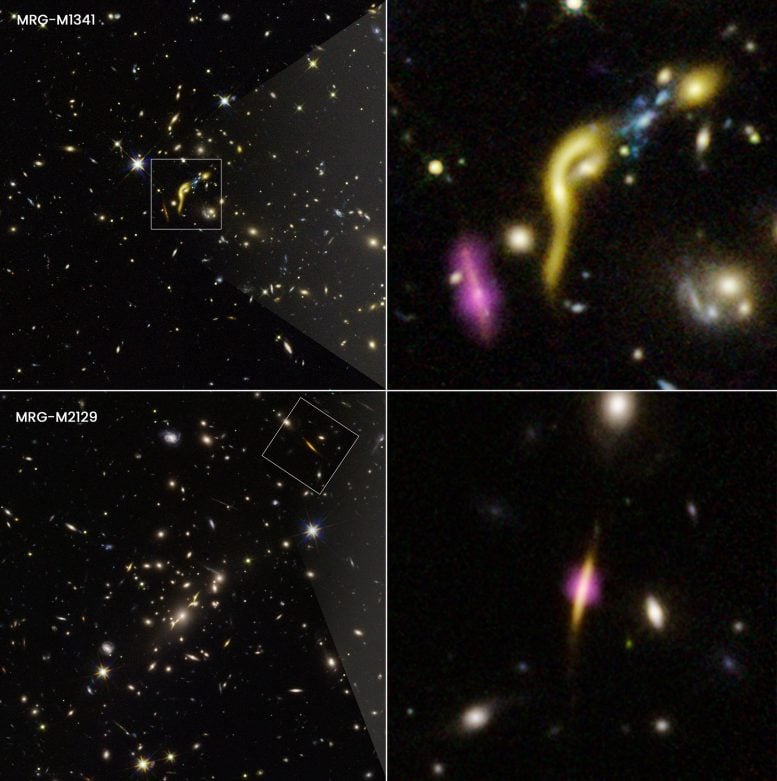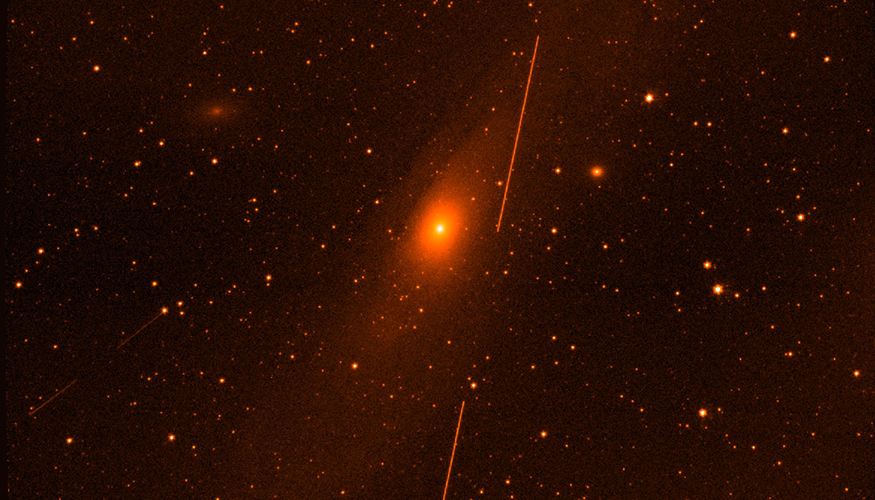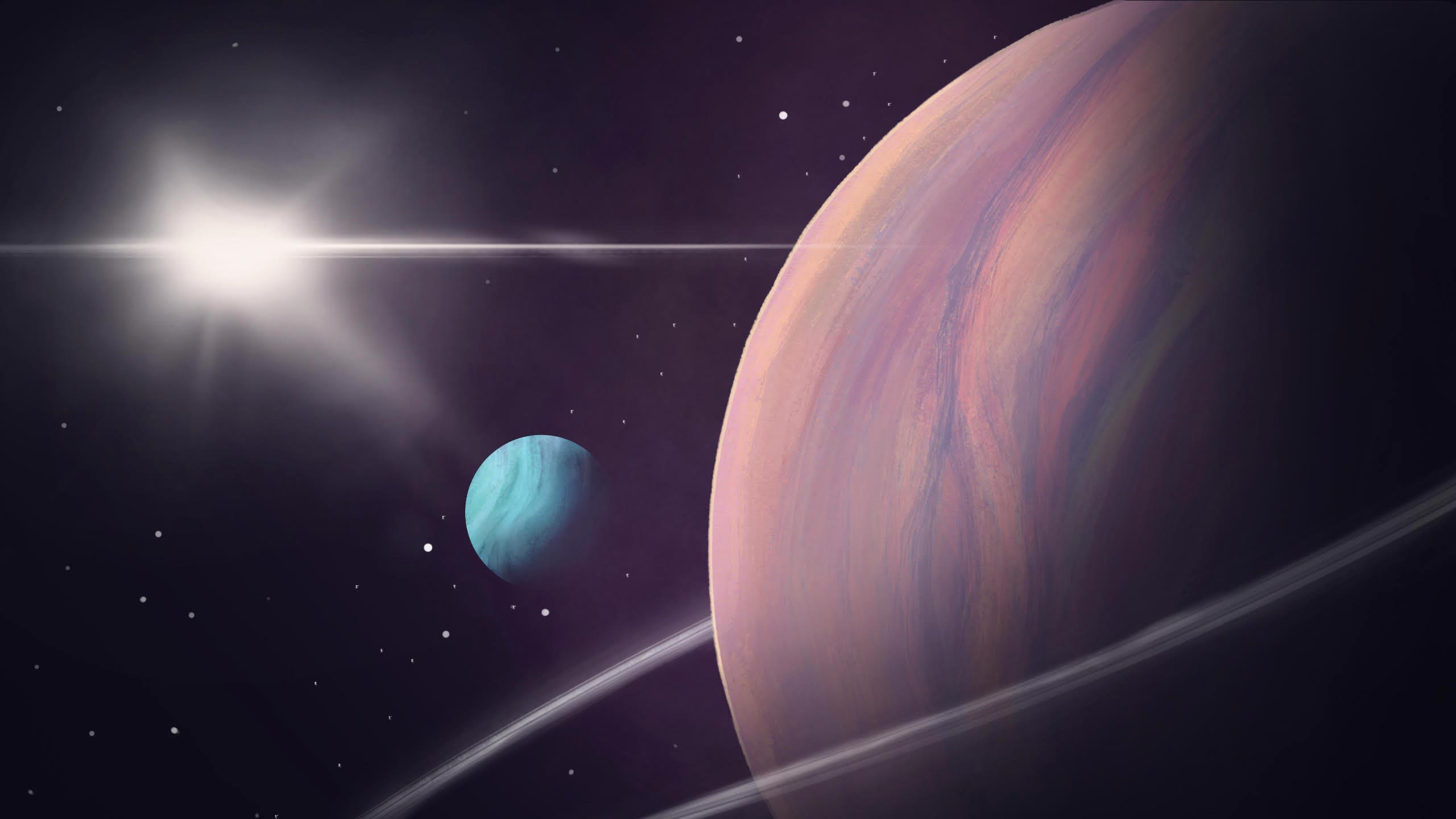The slumbering giant galaxy at the center of this image is 10 billion light-years away. Credit: ESA/Hubble & NASA, A. Newman, M. Akhshik, K. Whitaker
Unprecedent measurements confirm galaxies idle when they run out of cold gas.
New research, published in Nature and led by the University of Massachusetts Amherst, has just answered one of the fundamental questions about our universe: Why did some of the oldest, most massive galaxies go quiescent early in their formation? The answer, we now know, is because they ran out of cold gas.
“The most massive galaxies in our universe formed incredibly early, just after the Composites from NASA’s Hubble Space Telescope and ALMA showing closeups of two galaxies, MRG-M1341 and MRG-M2129, 10 – 12 billion light years away. Credit: Whitaker at al., 10.1038/s41586-021-03806-7, Joseph DePasquale















